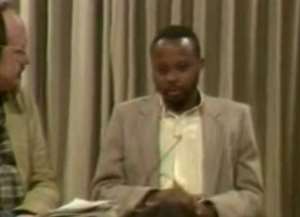
Angola gained independence after a long and bloody war which started in 1961, ending nearly 500 years of Portuguese colonial rule.
A transitional government made up of the three main liberation organisations - the National Front for the Liberation of Angola (FNLA), the Popular Movement for the Liberation of Angola (MPLA) and the National Union for the Total Independence of Angola (UNITA) - was formed in January 1975 with the signing of the Alvor Agreement. Significant ideological differences made the coalition government unsustainable in the long term.
On 11th November the MPLA declared Angola independent under the Presidency of Agostinho Neto; the FNLA and UNITA set up a rival government seeking and receiving external support from South Africa on the ground, and the United States (US) financially and militarily, in a bid to oust the MPLA from power. The MPLA in turn received similar support from Cuba and the Union of Soviet Socialist Republics (USSR), then the opposing "superpower" to the US.
The involvement of the two superpowers - the US and USSR -helped set the scene for a lengthy civil war for the people of Angola, immediately post independence. By the time the civil war ended in 2002, following the death of Jonas Savimbi, leader of UNITA, the Angola people had experienced almost 40 years of ongoing conflict.
The following video gives background to the Angolan civil war following independence, highlighting South African and US "investment" into undermining and destabilising the MPLA using, not only the FNLA and UNITA, but also Mobutu in what was then neighbouring Zaire. The clip is just under 60 minutes but well worth watching:




 Former Kotoko Player George Asare elected SRC President at PUG Law Faculty
Former Kotoko Player George Asare elected SRC President at PUG Law Faculty
 2024 elections: Consider ‘dumsor’ when casting your votes; NPP deserves less — P...
2024 elections: Consider ‘dumsor’ when casting your votes; NPP deserves less — P...
 You have no grounds to call Mahama incompetent; you’ve failed — Prof. Marfo blas...
You have no grounds to call Mahama incompetent; you’ve failed — Prof. Marfo blas...
 2024 elections: NPP creates better policies for people like us; we’ll vote for B...
2024 elections: NPP creates better policies for people like us; we’ll vote for B...
 Don’t exchange your life for wealth; a sparkle of fire can be your end — Gender ...
Don’t exchange your life for wealth; a sparkle of fire can be your end — Gender ...
 Ghana’s newly installed Poland train reportedly involved in accident while on a ...
Ghana’s newly installed Poland train reportedly involved in accident while on a ...
 Chieftaincy disputes: Government imposes 4pm to 7am curfew on Sampa township
Chieftaincy disputes: Government imposes 4pm to 7am curfew on Sampa township
 Franklin Cudjoe fumes at unaccountable wasteful executive living large at the ex...
Franklin Cudjoe fumes at unaccountable wasteful executive living large at the ex...
 I'll 'stoop too low' for votes; I'm never moved by your propaganda — Oquaye Jnr ...
I'll 'stoop too low' for votes; I'm never moved by your propaganda — Oquaye Jnr ...
 Kumasi Thermal Plant commissioning: I pray God opens the eyes of leaders who don...
Kumasi Thermal Plant commissioning: I pray God opens the eyes of leaders who don...
